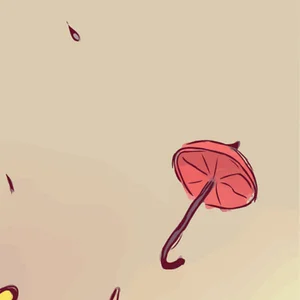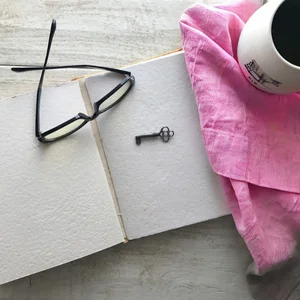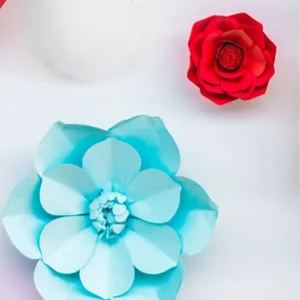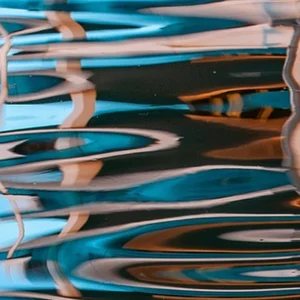See me. See Me. SEE MEE. The journey from feeling “less than” to always needing a witness to your success to desperately wanting to set the bar for others.
It starts as a whisper. It becomes louder. It turns into a strategy. And it’s the sad, painful journey many experience when we mistake external validation for internal healing. It’s the journey from “I’m not enough” to “Look how enough I am now” without ever feeling really enough.
Last week, I explored the tragedy of attention culture – how our desperate need to be seen by others often blinds us to what we’re actually seeking.
Is it just a never-ending loop, and we are helpless prisoners? Is there any end to this tunnel? Can we at least bring some light into the tunnel? The more questions I asked, the more nuanced a conversation I had with myself, and the more I isolated an idea that I thought deserved its own explanation.
See me. We might feel trapped, but are we trapped by design? Are we at the mercy of unknown or untamable forces ? To what extent? What roles do we play, what are we trying to soothe, fill, or silence? And what happens when we mistake performance for healing?
See me. See Me. SEE MEE. The progression is not accidental. And it’s not for building the hype in writing. It’s exactly how it works. And if you choose stillness for a moment, you can feel how it’s been building deep inside.
From our earliest days, we get our sense of self from how others respond to us. Our cries aren’t just signals of hunger but calls for connection. We’re designed to discover ourselves and the world with curiosity and excitement, drawing new maps on clean slates, using our senses and the leading roles of others as our colorful crayons.
The question is: What happens when the mirror cracks? When love comes with conditions, when attention requires performance, when silence becomes the dominant reflection? When our way to discover the world is directed to take a pre-established shape, when we are guided to see only a specific path, when expansion is limited?
We adapt. We craft roles. We build identities not from curiosity about who we are, but from fear of what we might lose.
The journey feels like a maze that always leads to a dead end until we realize that the way out isn’t about pushing harder or performing better. It’s about turning inward and asking different questions: Do we carry perfect recordings of our experiences, or do we store and replay the meanings we attached to specific moments? Is it facts or interpretations of events that stay with us? Is it facts or perceptions?
When you recall a childhood moment, you’re not accessing a file that holds facts neatly arranged in a sequential order. You’re actually reconstructing it through the lens of what it meant to you – the story you told yourself about what that look or silence or comment revealed about love, safety, your worth, and how the world works.
A father’s distracted “uh-huh” becomes evidence of not being valued. A teacher’s comment becomes proof that you don’t belong. A brief absence becomes the fear of being alone. A discreet observation about proper behavior becomes the underlying story of fear of embarrassment. A publicly revealed mistake sets the ground for striving for perfection. A misunderstanding turns into a habit of overexplaining and justifying yourself. A disappointment becomes a hundred walls of protection. A raised tone is the seed for fear of conflict. Consistent feedback meant to help you grow and improve becomes a fear of criticism. The fear of rejection might be born from hearing “no” from an exhausted parent. Access to different perspectives and understanding that there are other ways to see and live life become comparison traps. The list is literally endless.
In those moments, it is not just the pain – it’s the story of becoming a brilliant strategist. We begin gathering evidence for a case we are building about ourselves. Every sight, every moment of being overlooked, every time we had to perform for love – it all goes into an invisible file of meaning. And when being yourself doesn’t work, you become someone else. It’s how we start trying on identities like clothes: the funny one, the helpful one, the perfect one, the invisible one. Each role is a hypothesis: “Maybe if I’m this, I’ll be loved.”
And these early meaning-making moments don’t just fade into memory – they become the invisible blueprint for how we navigate every room we enter for the rest of our lives.
It’s what I call building a personal filter – a unique filter through which each of us perceives, receives, and continues to interpret the world. A fascinating web that holds the past, informs the present and the future. Every interaction is filtered through past wounds and future fears. And we are never fully present: “This feels like that time when…” or “If I don’t do this, then…”
It means that the original wound becomes the adult performance. And it gets worse. It becomes an exhausting battlefield where those wounds collide with society’s pressure to be the opposite of wounded.
We’re not just dealing with one voice, but two competing internal realities locked in constant combat:
Voice 1 (The Wound): “You don’t matter. You’re not enough. You’ll always be less than.” Voice 2 (The Pressure): “You must matter. You must be enough. You must make a difference. You have to distinguish yourself.” On and on and on.
The child who felt invisible doesn’t grow up to feel visible. You grow up to feel invisible while being forced to perform visibility. And the visibility you do experience often feels more like walking naked through the center of town: exposed, afraid of true vulnerability, and carefully curated. You’re carrying the weight of too many insecurities while working hard to maintain the illusion of a flawless presence. The core wound remains untouched, but now it’s covered by an elaborate performance that society demands and rewards.
And it hit me: our culture doesn’t offer space for the wounded child – it provides templates for the “recovered” adult. We get scripts that say: “Turn your pain into power”, “What doesn’t kill you makes you stronger”. “Your story can inspire others.”
A collection of performance instructions disguised as healing messages. They tell us exactly how to package our wounds into socially acceptable narratives.
This isn’t about becoming the opposite of what you experienced – it’s about being forced to perform the opposite while the original experience continues to live inside you, unresolved.
And the infamous “Fake it ’till you make it” – which perfectly captures the dysfunction – it assumes that performing the opposite of your wound will eventually resolve it.
Year 1: “I’m pretending to be confident, maybe I’ll start feeling it. I have a few great mantras,” Year 3: “I’m good at acting confident and I have something to show. I still feel insecure, I’ll keep on trying” Year 5: “I’m known for being confident. I’m so exhausted” Year 7: “Who am I without this exterior shell? “Year 10: “I have no clue who I am.” Year 15: “I’m drained. All I want is a peace.”
From the outside, it might look like confidence. Achievement. Transformation. Presence. The person who went from invisible to impossible to ignore, from victim to victor, from broken to breakthrough. But that polished exterior isn’t strength at all – it’s a survival response wearing designer clothes.
And we buy it. All of it. Not because we are blind and stupid. But because we have an innate desire to move away from struggle and pain, to evolve, to expand. And, truth to be told, the approach is not entirely flawed, either. It is incomplete.
In intimate relationships, the “see me” need becomes a demand, and it’s even more destructive.
Without even realizing, we transfer the responsibility onto our partners, friends, and family members. Unconsciously we make them responsible for reflecting back our worth, for seeing us in the way we need to be seen, and our relationships transition from being intimate to transactional: the curiosity to know the other fades and partners become sources of validation. A slow, destructive blend of demands, expectation, and disappointments: keeping track of who remembers the stories, celebrates big and small wins, feeling hurt when they don’t respond to your vulnerability with the intensity you thought you needed but never openly shared, interpreting the other people distractions and evidence they don’t value us, everything while you’ve never thought to ask about what is really going on from the other’s perspective.
And it goes progressively deeper: you become the person who always supports others, hoping they’ll reciprocate, and when they don’t, disappointment leads to frustration, and everything builds up. Now, not only that you are the giver, but you also keep score. You expect others to be consistently attuned to your emotional needs, you test relationships, you become resentful when others aren’t as invested in your emotional world as you want them to be, and you unconsciously rank people based on how well they see you the way you need. We turn our partners into mirrors and then get angry when the mirror doesn’t reflect what we want to see.
And here comes the paradox: the more desperately you need to be seen, the less capable you become of true vulnerability, and you curate even your most “authentic” moments to ensure the response you need.
But true connection cannot be curated.
Real intimacy requires the capacity to be present yourself and with someone else’s experience, not just your own need to be met. It sounds great, doesn’t it? But it feels more like the distant mountain top while you haven’t even packed your backpack, overwhelmed by the spread of wounds, questions, needs, and dreams lying all around you.
The “what now?” conversation doesn’t start on the fancy, glamorous side of things. It starts with simplicity and truth.
It’s not about picturing perfection or choosing a model for what the ideal would look like and drawing a map with milestones to get there. The solution isn’t to stop wanting to be seen either – that’s a fundamental human need.
The solution is to develop the capacity to see ourselves with the loving attention we’ve been seeking from others. And it starts with having the courage to look inside, discover and reframe the initial stories.
Another interesting paradox is that when we stop performing to be seen, we become more visible. But in a way that feels safe, in a way that allows.
You’ve probably experienced it already: there’s something magnetic about someone who doesn’t need constant validation to know their worth. You thought it’s their confidence based on success, accomplishments, status, financial power. But it’s all because they can be present with themselves and the world without desperately needing a mirror to confirm their identity.
The question isn’t: “How can I get others to see me as I need to be seen?”
The question is: “How can I learn to see myself with such loving attention that others’ recognition becomes a gift rather than a necessity?”
When we can answer that question from a place of genuine being rather than just well-rehearsed words, everything changes. Our relationships become about connection rather than validation. Our work becomes about showing love and appreciation rather than seeking recognition. And our healing becomes about genuinely coming home to the essence rather than performing recovery for an audience.
The “See me. See ME. SEE ME” can finally quiet and soften “I see you. I see me. This is enough.”
Shared with Love,
Gabriela
This article is part of a series exploring different angles and dimensions of this topic. Here is the first article from the series and you can sign up to be notified when the next piece becomes available.
I don’t pretend I KNOW. I write from my experience and from my heart, hoping that what I share will be the support someone needs on their journey. I reserve the right to be wrong and change my mind as I grow in my own understanding.
Have questions, comments or suggestions? Please never hesitate to reach out, I always reply to messages gabriela@experiencetruewealth.com
Join the subscription-based version of the blog to receive exclusive content and practical exercises that meet you where you are, whether you’re searching for clarity, courage, or simply a moment of stillness and guide you deep into your journey.






